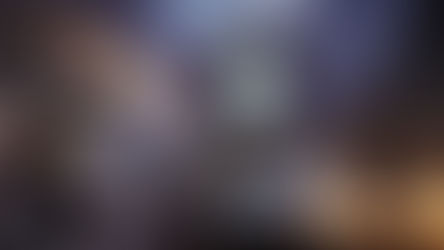The Elements of Dull: Bionicle: The Game Review
- Ben Stembridge
- Mar 2, 2017
- 4 min read
The Lego Group's toy series, Bionicles were arguably the most popular toys of the 2000s. The build-able action-figures were some of the most critically acclaimed toy sets for kids and young adults from 2000 to 2010 (later in 2015). It ran for ten years, and even pulled Lego out of their significant financial slump of the 1990s. The story of the elemental heroes was vast, creative, and magical. Its first few series even garnered enough notoriety for a fun animated movie, Bionicle: The Mask of Light (2003). So what the hell happened to the accompanying Bionicle: The Game?

Let's be clear, Bionicle rocks. I grew up with them and loved every aspect of it. It's a living toy series with mass appeal. Its lore is fascinating and extensive, and the toy series and movie set it up for success. However, this first crack at a feature video game is not one for the win column. Released shortly after the film in 2003 by a developer called Argonaut (Starfox, 1993), Bionicle: The Game is quite a mess. It barely follows any of the film's primary storylines, with the exception of the barebones of the overall plot. Audio and graphical output is laughable (even for the time period), and gameplay mechanics are lacking. Let's begin.
Bionicle: The Game opens with a bordering-on-incoherent cutscene during which a group of Matoran (a race of small civilian bionic beings) are putting on a show for their six Toa heroes (larger bionics that harbor elemental powers). In the middle of the play, a group of bionic creatures attack the area causing panic. After the heroes clear the area, they determine that the dreadful Makuta is behind it (obviously), and set off to their individual domains on the island of Mata Nui in order to stop the new threats.

Each “chapter” is centered around one of the six Toa demigods (Tahu, Kopaka, Pohatu, Onua, Lewa, and Gali) in their quest to cleanse their respective sixths (regions called Wahis) of the Matoran’s island home, Mata Nui. The first mission puts eager, young players in the red feet of Toa Tahu, Spirit of Fire. It’s during this mission in which we learn the controls to this awkward game. Bionicle: The Game features third-person gameplay as gamers control the direction and trajectory of the character. Combat is an interesting package to unbox. Each Toa is equipped with a type of melee weapon, such as a sword, axe, or hammer. However, these stylish elemental weapons cannot be used for close quarters combat. Rather, they fire powerful energy blasts that lock on and track enemies. While you’d think that they would fire blasts based off the Toa’s element (fire, earth, wind, etc), they all fire the same projectile.
So these powerful demigods all exhibit the same powers, even though they are marketed as fundamentally different? Yes. However, there are some exceptions. For example, the female Toa Gali of Water can dive underwater and hold her breath for long periods of time. Toa Lewen (who is outrageously misrepresented in this game) can use his aerodynamic swords to glide in certain situations. This, aside from the environments they inhabit, are the only true expressed differences between the colorful titans.

The narrative is virtually null as you go from Toa to Toa in search of bionic beasts to slay, for seemingly no reason other than them being scary and aggressive. While Bionicle: The Mask of Light movie follows two Matoran searching for a legendary seventh Toa and are supported by the existing ones along the way, The Game simply puts you in innocuous Toa roles to kill some robot monsters and save Matoran. Very few motives, and no thematic elements to tie in why. The primary villain, the Makuta, isn’t even seen until the final mission, which is about as repetitive and uneventful as a trip to a closed theme park. In reality, Makuta is a wildly complex being, and brother to the deity of Bionicles, Mata Nui. Makuta grew jealous of Mata Nui’s accomplishments in governing the world, and threw him into a great sleep. The Seventh Toa, the Toa of Light, is destined to defeat Makuta, and awaken Mata Nui. This game, touches on virtually none of this until the last eighth of the story.

In regards to design and style, Bionicle: The Game has the worst camera angles I’ve ever seen. When I was speeding down a snowy mountain as Kopaka, Toa of Ice, I couldn’t even register what was coming my way. On the way down, the camera stayed fixed on the downward slope as I shredded the powder, avoiding robotic animals called Rahi such as spiders and dragonflies. It was disorienting, and odd-looking. This mess of a game is full of them! Jumping often pulls the camera and contorts views into awkward positions. Traversing a lake of quicksand is never an easy task, but when your view of the inelegant Toa Pohatu, Spirit of Stone, Protector of Po-Wahi and the Po-Matoran dwelling of Po-Koro, Bender of the Stone Desert, and resident claw-throwing person, is obstructed by your own jumping, then it is particularly difficult. Not to mention the game has horrendous voice acting and sound mixing - some icing to this mediocre cake.
Overall, this posthumous review points to the obvious: the game kind of sucks. 2003’s Bionicle: The Game fails to capitalize on its successful and inspiring series, and presents a half-assed journey from one meaningless chapter to another. While eight year-old me loved the hell out of this thing on my Nintendo GameCube, adult me can’t wrap my head around an appeal of any kind.










Comments